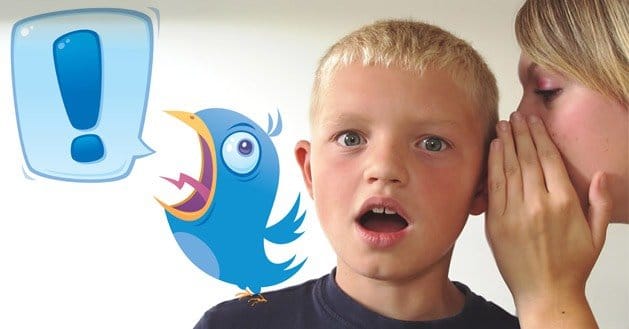 Written by ContentPowered.com
Written by ContentPowered.com
Maybe you are in a creative funk. For some reason, your Twitter account doesn’t seem to be accomplishing what you hoped it would. You’re not gaining followers and retweets, or even worse, your followers are dropping you at an alarming rate. You can’t come up with new ideas or they all seem terrible. Here are some tips to get you through this dry spell.
Why Are You Out of Ideas?
Analyze why your idea well has evaporated. Is it because you run the Twitter account for your company, and co-workers and bosses used to pitch you ideas all the time, but now they’ve moved on to the next shiny thing? Or perhaps they never did help funnel ideas, but you used to easily come up with them, and these are much harder to come by now that you’ve been at it awhile? In either scenario, you have plenty of options.
- Look at your competitors and people you wish to emulate. What are they tweeting about? Do you see a gap in coverage you could address? Is there a fresh slant on an ordinary topic? Do you have unique insight to offer?
- Click on “Trends” on Twitter to see what is trending. Follow the same principle as above—do you see something, either related or not related to your business, that you could address and give a different spin to?
- Make a list of solutions to your audience’s problems. For instance, if your Twitter account is for a car repair company, you could post something near the end of the month like: “February car inspections are due tomorrow. Stop by X company and get $3 off.”
- Email people at your company (or, if this is a one-person, two-person business or a personal account, then friends and peers in similar positions) and explain your situation. Solicit ideas. You may want to limit the number of email recipients lest the amount of replies overwhelm you.
- Brainstorm a list of questions to ask on Twitter. The beauty of questions is that you can initiate discussion on a topic, and other people will keep it going. Be sure to identify something relevant to your audience, a topic audience members can connect with. Provide a rationale rather than making the question seem untethered and out of the blue. The question “Any good new mystery books out there?” is okay, but you’re likely to get more attention if you phrase it differently: “Just finished X Mystery Title. Great book! Any recommendations for more mysteries?” or “I haven’t read a good mystery in a while. Been too busy. Any recommendations?”
- Link to interesting news stories and websites that will enrich your audience’s base of knowledge.
- You almost certainly subscribe to magazines in your field. If you read a thought-provoking article, or just an enjoyable one for whatever reason, link to it on Twitter with the reason why. For example: “Shady math or real problem? Read this article.” If characters in the tweet allow, offer unique insight or save that for a following tweet.
- If you don’t already have a blog that you link to for more in-depth analysis, consider starting one so you can build more of a foundation beyond Twitter’s limit on characters.
Re-evaluate Your Freedom
You may feel restricted by your options if your account is corporate. Perhaps your bosses have told you not to stray from the subject of Widget Z. Maybe you run your business yourself as a one-person show, or as a small business, and it seems weird and unprofessional to tweet on topics unrelated to it. Think again. Expand your scope. Don’t be afraid to Tweet on a variety of topics even if they are not related to your business. You have to connect with people on a personal level and not on a level that makes them feel like you care about them only to the extent they can put dollars in your coffers. This can be difficult if your corporate bosses don’t buy this or understand, so bring them examples of your competitors’ tweets—or heck, examples from a variety of businesses and celebrities. Does celebrity X tweet solely about her latest movie? Very likely not. Work to get that permission you need, and you can tweet on issues anyone sympathizes with—“Horrible traffic on Interstate 81 this morning! Anyone else see the wreck?”
Tap into the power of images. It is true that a picture can speak a thousand words, and photos make compelling tweets. If there’s a beautiful sunset or cloud formation outside your office building, capture it and post on Twitter. Sure, it has nothing to do with the business, but that is the point—and it gives you a sly way to get your business name mentioned in an innocuous setting. For example, say a family of deer crossed the path behind your office building, and you or a co-worker got a photo. You can then post the picture on Twitter with the message: “Gorgeous family checks out Widget Z Company!” With a sunset or pretty flower, simply go with “Beauty outside Widget Z Company.” Don’t overdo the pictures or name-dropping, though. Two photos a day should be enough, and putting your company name with just one of them suffices. If you email your co-workers for ideas, be sure to add the photos pitch. They might have a treasure trove of lovely pictures shot in and around your building.
Go fun with the photos too. Post pictures from employee Halloween contests or birthday parties. People love behind-the-scenes glimpses. Make yourself and your company easy to relate to.
But what if you don’t get permission? What if your bosses say you must stick with a focus on the company with no deviations concerning employees, book recommendations and pretty photos? This makes your job more difficult but not impossible. Go back to the first section (Why Are You Out of Ideas?) to get help. You can also post trivia related to your company and its product line. You can also post questions and offer a prize to someone who tweets a correct answer (have a drawing among all who answered correctly). For instance, you can ask: “Widget Z Company was formed in what year? Tweet us by 3. Hint: answer ends in 0. Winner of drawing gets 10 percent off next order!”
Also scour the Internet and quote books for quotations related to your product or company. Tweet these quotes but ensure proper source citation.
Retweeting and Curating

Scour Twitter for messages that your audience would appreciate. Retweet these messages, but spread the love around. Don’t focus on just one or two accounts to retweet from, and keep some fresh tweets coming from your own account.
Do you have other ideas on how to come up with tweets? Share them below.

This is the most important line from the article: You have to connect with people on a personal level and not on a level that makes them feel like you care about them only to the extent they can put dollars in your coffers.